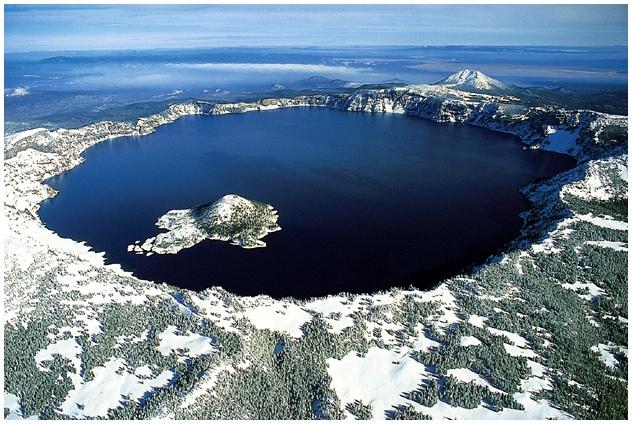[/caption]
It’s not a mountain any more, but geologists refer to Mount Mazama as a peak in Oregon that used to exist before a catastrophic eruption destroyed the entire mountain and collapsed it into a giant caldera. The water-filled caldera is known Crater Lake, the deepest lake in the United States.
Mount Mazama started growing about 400,000 years ago, and it was made up of lava flows mixed with pyroclastic material. After that base was created, it switched to more explosive eruptions about 75,000 years ago. Then Mount Mazama started cone building eruptions until about 50,000 years ago. At its largest point, Mazama’s peak probably had an elevation of 3,400 meters.
Mazama started its devastating eruptions around 5677 BC with a large release of ash and pyroclastic flows. But the most devastating eruption happened 1-200 years later, when almost 60 cubic kilometers of magma was ejected out of the volcano. This emptied the magma chamber beneath the mountain, and caused it to collapse into a deep caldera. This is why Crater Lake is so deep.
Hundreds of square kilometers around the mountain were destroyed by ejected ash and deadly pyroclastic flows. One flow reached a point 64 km away down the Rogue River Valley. Ash from the explosion settled over a 1.3 million square km region of what is now the United States and Canada.
Geologists believe that there will be more volcanic activity in the future. Lava will probably make Crater Lake more shallow and eventually divide it into multiple lakes. But Mount Mazama probably won’t ever reform at the same size and structure before its detonation.
The name for Mount Mazama came from a climbing club from Portland. The were the Mazamas, and named the missing mountain after their group.
We have written many articles about volcanoes for Universe Today. Here’s a list of some of the most famous volcanoes in the world, and here’s an article about nearby Mount St. Helens.
Want more resources on the Earth? Here’s a link to NASA’s Human Spaceflight page, and here’s NASA’s Visible Earth.
We have also recorded an episode of Astronomy Cast about Earth, as part of our tour through the Solar System – Episode 51: Earth.

